If you’ve been dabbling in the world of solar energy, chances are you’ve stumbled upon the terms ‘on-grid’ and ‘off-grid.’ But what exactly do they mean? How do they impact your solar journey?
In this article, you’re going to discover everything you need to know about on-grid and off-grid solar systems and most importantly, which one is best for you.
This is what we are going to cover:
- What exactly is an on-grid solar system?
- What does off-grid solar system mean?
- Can on-grid solar systems work during a power outage?
- How does an off-grid system store energy for use when the sun isn’t shining?
- How does the cost of installing an on-grid system compare with an off-grid system?
- Can an on-grid system be converted into an off-grid system at a later time, or vice versa?
- What are the maintenance requirements for on-grid and off-grid systems?
- Which type of system is more suitable for urban areas, and which is better suited for rural areas?
- How does the size of the solar system differ for on-grid and off-grid setups?
Let’s start with the terminology…
What Exactly is an On-Grid Solar System?
The realm of solar energy can sometimes seem to be overflowing with jargon, and one phrase you’ll often come across is ‘on-grid solar system.’
But what does it mean exactly, and how does it work in the context of solar power generation?
An on-grid solar system, also known as a grid-tied solar system, is a solar power generation system that remains connected to the utility power grid. The key feature of this system is its ability to balance power production and usage through a two-way interaction with the grid.
This type of system primarily consists of solar panels and a grid-tied inverter. During the day, solar panels convert sunlight into DC (Direct Current) electricity.
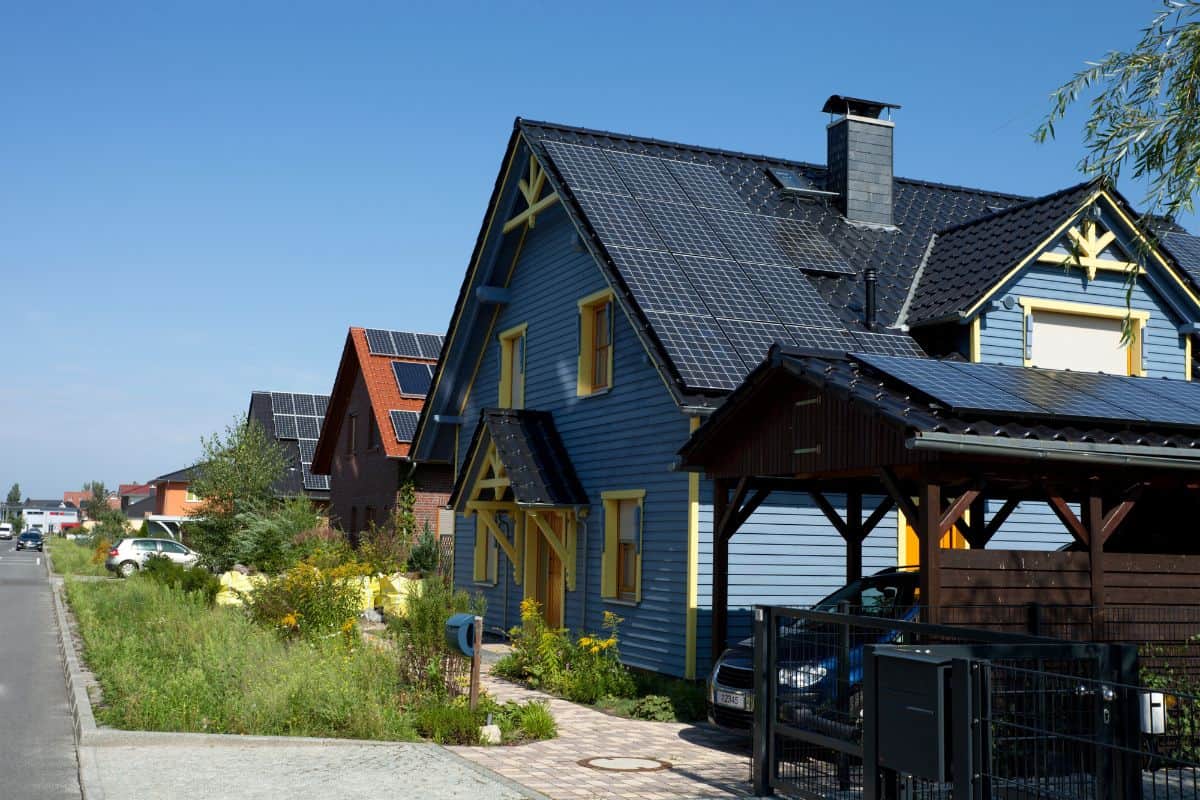
The inverter then transforms this DC electricity into AC (Alternating Current) that your household appliances can use.
An essential aspect of an on-grid solar system is net metering. It’s a billing mechanism that allows homeowners to feed their excess solar power back into the grid.
When your solar panels produce more electricity than you use, this surplus energy is exported back to the grid, effectively turning your electricity meter backward.
During times when your panels aren’t producing sufficient power, such as at night or on cloudy days, you can draw this power back from the grid. In effect, the grid acts like a massive battery, storing your excess power until you need it.
However, one caveat of an on-grid system is its dependency on the grid. If a power outage occurs, your on-grid solar system will typically shut off to prevent the risk of electrocuting utility workers who might be fixing the power lines.
To keep power during blackouts, you’d need to incorporate a battery backup system, which can add to the system’s overall cost.
An on-grid solar system is often preferred by individuals living in urban areas or places with a stable grid connection.
Its ability to balance out power production and consumption, possibly even generating a profit, makes it a popular choice for homeowners looking to offset electricity costs and contribute to a greener future.
Keep in mind, though, that the setup and operation of an on-grid solar system involve coordination with your utility company and must adhere to specific regulations and standards.
Therefore, professional installation is highly recommended for safe and efficient use.
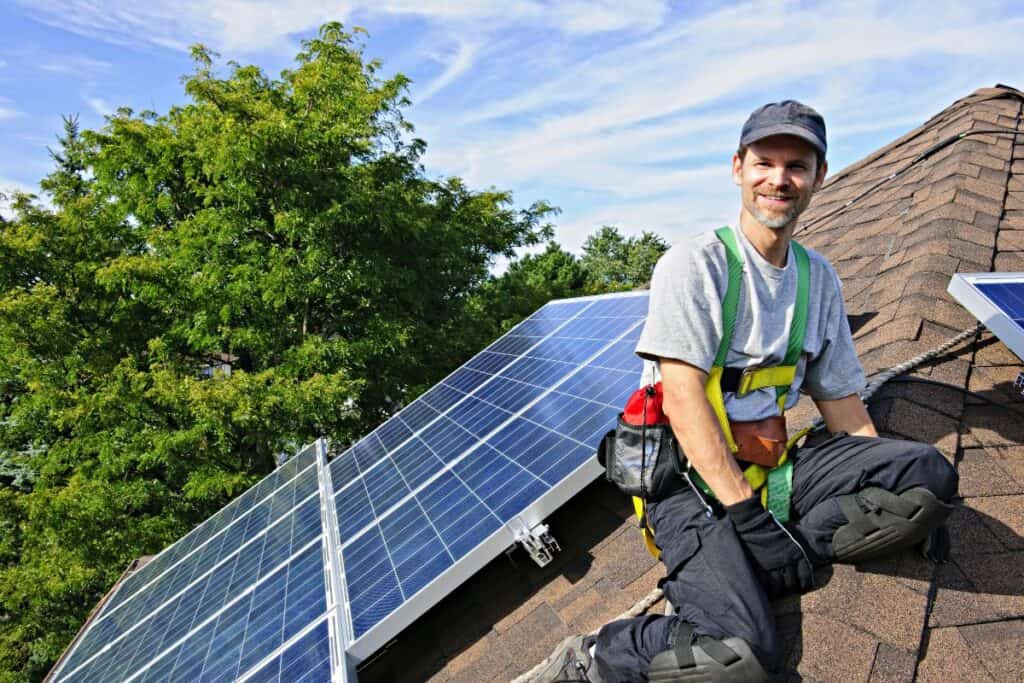
What does off-grid solar system mean?
In our exploration of solar energy systems, we’ve come across the term ‘off-grid solar system.’
Sounds pretty self-explanatory, right? But there’s more to this system than its independence from the power grid. Let’s take a closer look at what an off-grid solar system entails.
An off-grid solar system, often referred to as a standalone power system, is a solar power system that operates independently from the utility grid. Unlike on-grid systems, off-grid solar systems provide a fully self-sufficient power supply, making them the go-to option for remote areas where traditional electricity access is scarce or unreliable.
A typical off-grid solar system is comprised of solar panels, a charge controller, a battery bank, and an off-grid inverter.
The solar panels generate electricity from sunlight, which then flows to the charge controller. This component regulates the power, preventing battery overcharge and disconnection.
The batteries store the electricity for use when needed, and the inverter converts the DC power from the batteries into AC power for household use.
One of the distinct features of off-grid systems is their total independence. You’re in control of your own power generation and consumption.
This autonomy, however, comes with greater responsibility in terms of energy management. Since there’s no grid to pull from during periods of low production, careful planning is essential to match energy generation with consumption.
This usually means sizing your system accurately to cover your energy needs, and often conserving power whenever possible.
Additionally, battery maintenance is a critical aspect of off-grid systems.
Since all your excess energy is stored in batteries for later use, ensuring their optimal performance and lifespan is vital. Neglecting battery maintenance could lead to a shorter lifespan and reduced efficiency.
While off-grid systems offer independence and are ideal for remote locations, they can be more costly upfront due to the addition of a battery bank.
However, in areas where extending the power grid is expensive, or for those who prefer energy independence, off-grid solar systems can be an excellent solution.
It’s worth noting that installing an off-grid solar system requires professional assistance for proper sizing, installation, and maintenance.
With the right system, living off-grid can be a practical and sustainable way to power your life, proving that independence and responsibility can indeed pave the way to a greener and brighter future.
Power Outages and On-Grid Solar Systems: Can They Coexist?
Experiencing a power outage can be a major inconvenience, especially when you’ve invested in a solar system and the sun is shining brightly outside. But the question remains, can your on-grid solar system keep your home powered during these blackouts? Let’s delve deeper into this topic to find out.
On-grid or grid-tied solar systems are connected to the local utility grid, and under normal circumstances, they provide a seamless supply of electricity. However, contrary to what many might believe, standard on-grid solar systems are not designed to provide power during a grid outage.
This surprising fact is mainly due to safety regulations. When the power grid goes down, utility workers often need to fix the issues causing the outage.
If a solar system continues to feed electricity back into the grid during this time, it could pose a risk to the workers, a situation known as ‘islanding.’
To prevent this, grid-tied solar systems are designed to automatically shut off during power outages.
Although this may seem like a downside, there’s a silver lining.
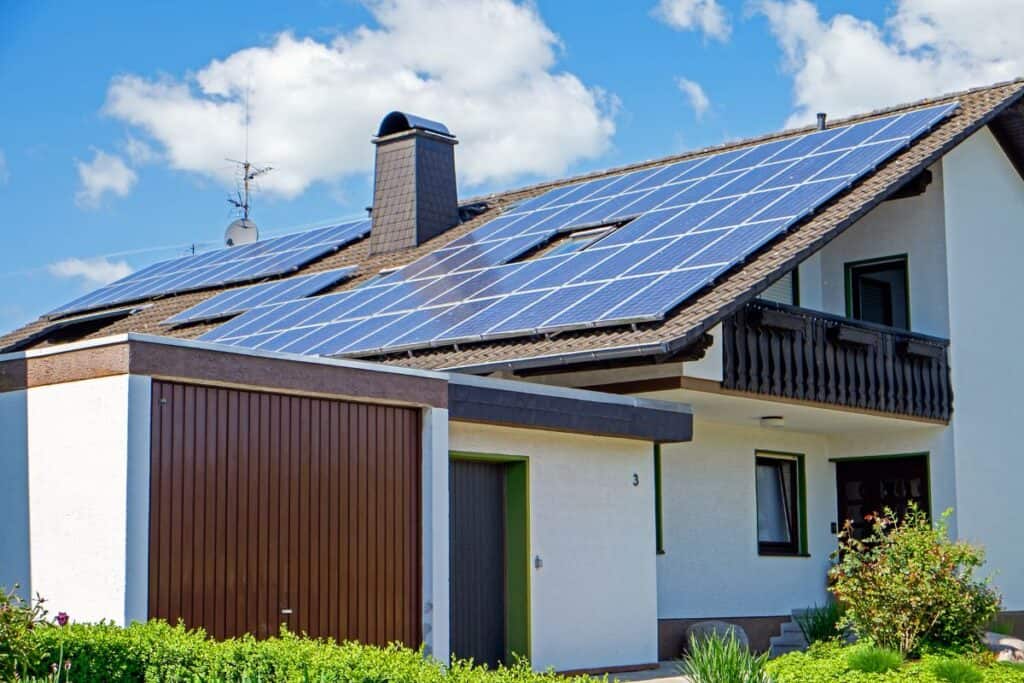
For those who want the benefits of an on-grid system but also want to keep their lights on during a blackout, there are options available. The most common solution is to install a battery backup system.
Battery backups work by storing excess power generated by your solar panels.
Usually, this excess power is sent back into the grid, but with a battery system, it’s stored for later use. During a power outage, the battery backup system kicks in, supplying electricity to your home.
Coupled with a specific inverter, the system can isolate your home from the grid during an outage, allowing your solar system to continue functioning without risking the safety of utility workers.
Integrating a battery backup with your on-grid solar system does come with additional costs for the battery itself, a compatible inverter, and installation.
However, if blackouts are frequent in your area or if having uninterrupted power is crucial for you, this investment can be well worth it.
To conclude, while a standard on-grid solar system won’t operate during a power outage due to safety measures, there are ways to ensure your solar power keeps flowing.
Battery backups provide a practical solution for those wanting to enjoy the benefits of grid-tied solar and the assurance of power, even when the grid is down.
When it comes to managing power outages with solar, it’s all about finding the right balance for your specific needs.
How does an off-grid system store energy for use when the sun isn’t shining?
Harnessing the sun’s energy to power our homes is an impressive feat, but what happens when the sun isn’t shining?
For off-grid solar systems, which are not connected to a utility grid, storing energy for use during non-sunny periods is an essential part of the system. So how exactly does an off-grid solar system achieve this?
Off-grid solar systems operate independently of the local utility grid, providing electricity from the solar panels to the home. These systems rely heavily on energy storage solutions, the most common of which is the battery storage system.
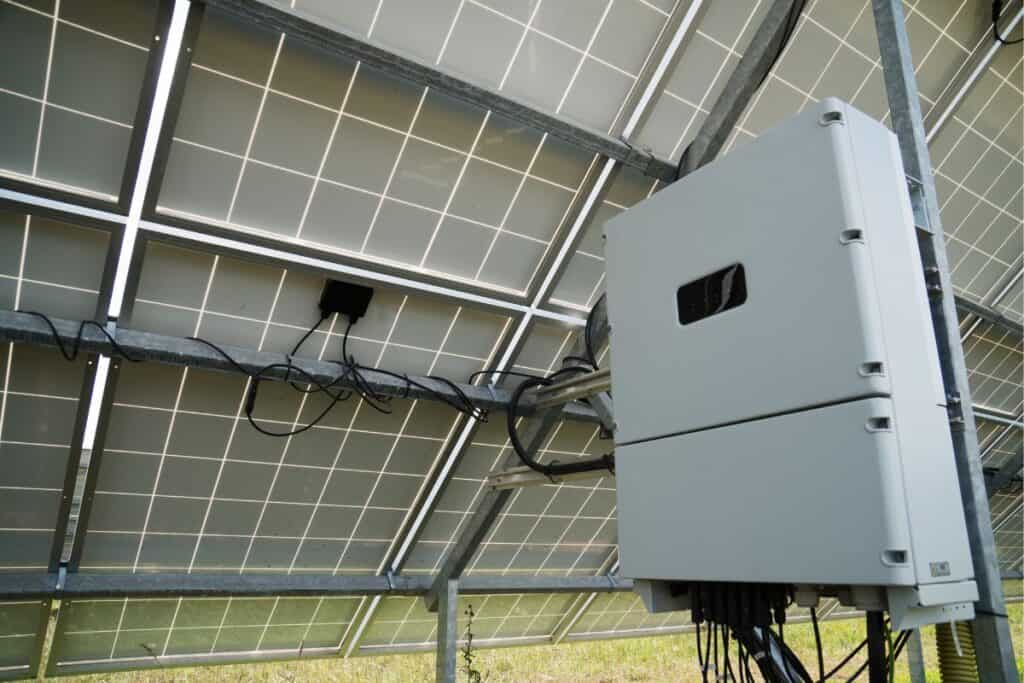
When sunlight strikes the solar panels in an off-grid system, the solar energy is converted into electricity.
This electricity can then be used immediately by your household appliances. But what about the excess power? This is where the battery storage system comes into play.
Batteries store the surplus electricity generated by the solar panels during the day.
This stored energy is then available for use during nighttime, cloudy days, or during peak energy periods when your solar panels may not be able to produce enough power to meet your home’s electricity demands.
The capacity of the battery storage system determines how long your off-grid solar system can support your home without sunlight.
Deep-cycle batteries, such as lead-acid or lithium-ion batteries, are most commonly used in off-grid solar systems.
These types of batteries are designed for regular and prolonged charging and discharging, making them perfect for daily use in a solar energy system.
The energy storage system is controlled by a charge controller, which regulates the flow of electricity to and from the batteries.
This device ensures the batteries are charged optimally—preventing overcharging and over-discharging—which can extend the lifespan of the batteries.
The size of the battery storage system you’ll need depends on your energy usage and the size of your solar panel system.
If you live in an area with long periods without sunlight, a larger battery storage system may be necessary to ensure you have enough stored power.
In conclusion, off-grid solar systems use a combination of solar panels and battery storage systems to generate and store energy.
The stored energy can be used when the sun isn’t shining, ensuring a continuous supply of electricity.
Understanding this process can help you make informed decisions about whether an off-grid solar system might be the right choice for you.
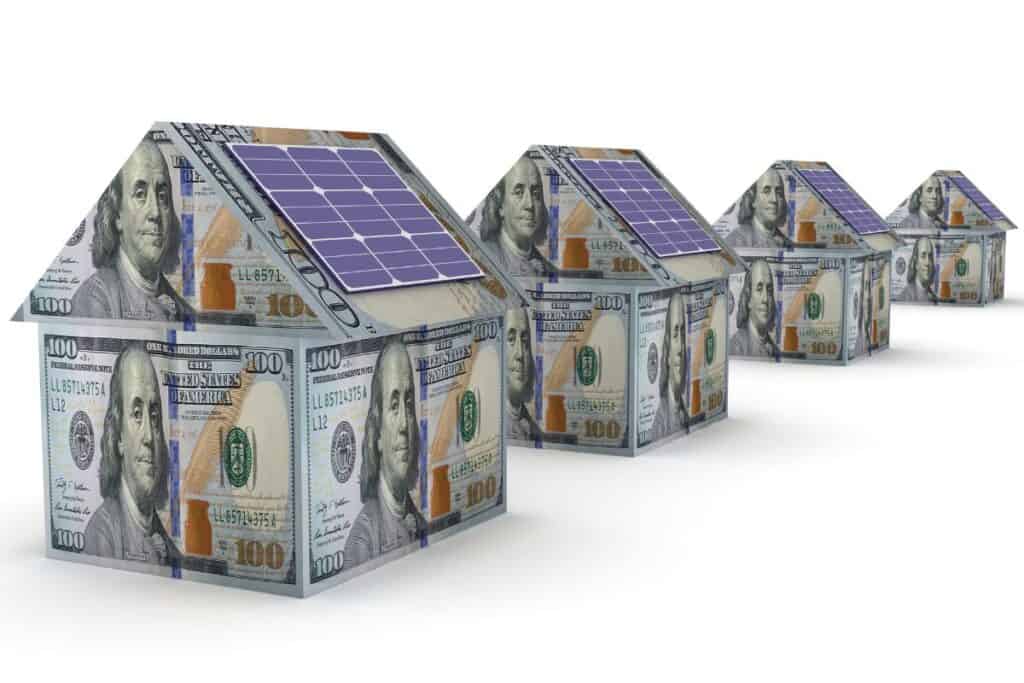
Comparing the Cost: On-Grid Versus Off-Grid Solar Systems
When it comes to solar power, both on-grid and off-grid systems offer ways to harness the sun’s energy.
But how do these two systems compare cost-wise? It’s important to understand that the initial investment can significantly differ between the two, mainly due to the complexity of the systems and the components required.
On-grid solar systems, also known as grid-tied systems, are connected to the local electrical grid.
They primarily consist of solar panels and inverters. These systems offset your electricity use by generating power when the sun is shining and selling the excess power back to the grid.
This allows for financial benefits like net metering, where homeowners can receive credit for the surplus energy their system produces.
On-grid systems are generally less expensive to install than off-grid systems, as they don’t require a battery storage system.
However, the cost can vary significantly based on factors such as the size of the system, your geographic location, and the available incentives in your area.
As of the time of writing, on-grid solar systems cost on average between $15,000 and $25,000, before federal or state incentives are applied.
On the other hand, off-grid solar systems operate independently from the local utility grid. In addition to solar panels and inverters, they also require a battery storage system and charge controller, which adds to the overall cost.
An off-grid system must be sized properly to provide enough power throughout the year, even during the shortest and cloudiest days.
This often means that off-grid systems need to be larger (and thus more expensive) than on-grid systems.
Moreover, batteries for off-grid systems can be quite costly and need to be replaced every 5-15 years, depending on the type of battery used.
The average cost of an off-grid solar system can range from $25,000 to $35,000, depending on the size of the system and the type and capacity of the batteries.
In conclusion, while on-grid systems generally have a lower upfront cost due to fewer components and potential financial benefits from net metering, off-grid systems offer energy independence.
The choice between an on-grid and off-grid solar system will depend on your energy needs, budget, and personal preference.
Remember, regardless of the system you choose, both provide a sustainable and renewable source of energy, contributing to a greener planet.
Can an on-grid system be converted into an off-grid system at a later time, or vice versa?
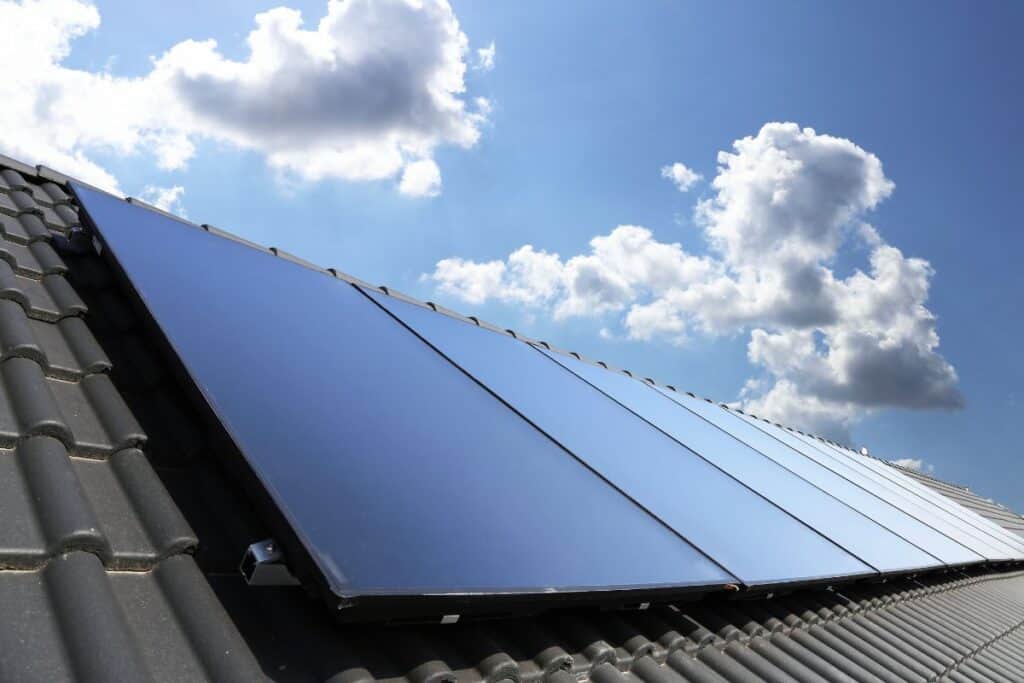
Converting Systems: Switching from On-Grid to Off-Grid and Vice Versa
The decision between an on-grid and off-grid solar system is a significant one, as it directly impacts your home’s energy independence and financial benefits.
But what if your needs change over time? Can you switch from an on-grid to an off-grid system, or the other way around?
The answer is, yes, you can – but it’s not always straightforward and comes with considerations.
Let’s first discuss converting an on-grid system to an off-grid one.
An on-grid, or grid-tied, system primarily consists of solar panels and inverters, with the grid acting as a kind of ‘battery’, storing excess power and providing power when your system doesn’t produce enough.
To convert this system to an off-grid setup, you’d need to add a battery storage system and a charge controller.
This addition allows you to store the excess solar power generated during the day for use when the sun isn’t shining, ensuring a continuous power supply independent of the grid.
However, it’s not as simple as just adding batteries. You’ll also need to ensure your inverter is compatible with a battery storage system, or you may need to replace it.
Additionally, you’d need to resize your solar panel system to account for days with less sunlight, ensuring you have enough energy stored to meet your needs.
This conversion can be costly and complex, and it’s essential to consider these factors before making the switch.
On the other hand, converting an off-grid system to an on-grid system involves a different set of challenges. Primarily, this conversion requires grid access.
If you initially chose an off-grid system due to a remote location, connecting to the grid might be impossible or prohibitively expensive.
Assuming you have grid access, converting would involve syncing your existing system with the grid and possibly upgrading your inverter to ensure it’s grid-tied compatible.
You’ll also need to coordinate with your local utility company to ensure proper connection and compliance with regulations.
In essence, while converting between on-grid and off-grid solar systems is technically possible, it can be a complex and costly process.
It requires a thorough analysis of your energy needs, access to resources, and financial considerations.
It’s always best to consult with a professional solar installer before making any significant changes to your solar setup to avoid potential complications and ensure a smooth transition.
Maintenance Needs for On-Grid and Off-Grid Solar Systems
Whether you opt for an on-grid or off-grid solar system, maintenance is essential to keep your panels performing at their best. But how do the maintenance needs of these two systems differ?
An on-grid solar system, by virtue of its connection to the public power grid, has relatively lower maintenance requirements. Its simplicity in design—comprising mainly of solar panels and an inverter—results in fewer components that might need regular servicing.
Basic maintenance for an on-grid system includes regular cleaning of the solar panels to remove dust, dirt, bird droppings, and other debris that could block sunlight.
You’ll also need to periodically check the inverter and other electrical connections to ensure everything is working correctly.
Professional inspection by a certified solar technician every few years can help detect any potential issues early.
On the other hand, off-grid solar systems, while offering energy independence, entail more complex maintenance due to additional components, specifically the battery storage system and charge controller.
Just like on-grid systems, off-grid setups also need regular cleaning of solar panels and checking of inverters and electrical connections.
However, the battery storage system adds an extra layer to the maintenance routine.
The batteries used in off-grid systems require regular check-ups to ensure they’re functioning correctly and to prolong their lifespan.
These checks include monitoring the battery’s state of charge, checking for any signs of corrosion, and ensuring the battery room is well-ventilated to avoid overheating.
Depending on the type of battery you have—lead-acid or lithium-ion—the maintenance needs can vary significantly. For instance, lead-acid batteries require regular topping up with distilled water, while lithium-ion batteries are virtually maintenance-free but come with a higher upfront cost.
For the charge controller, periodic inspections are necessary to ensure it is properly regulating the flow of electricity from the panels to the battery and then to your home.
Lastly, due to their energy-independent nature, off-grid systems need to be sized correctly to account for your power usage throughout the year, including during the shorter, less sunny days of winter.
This may require additional maintenance or system adjustments.
In summary, both on-grid and off-grid solar systems require regular maintenance for optimal performance, but off-grid systems, with their additional components, require a more comprehensive maintenance routine.
No matter the system you choose, always refer to the manufacturer’s guidelines or consult with a solar professional for appropriate maintenance practices.
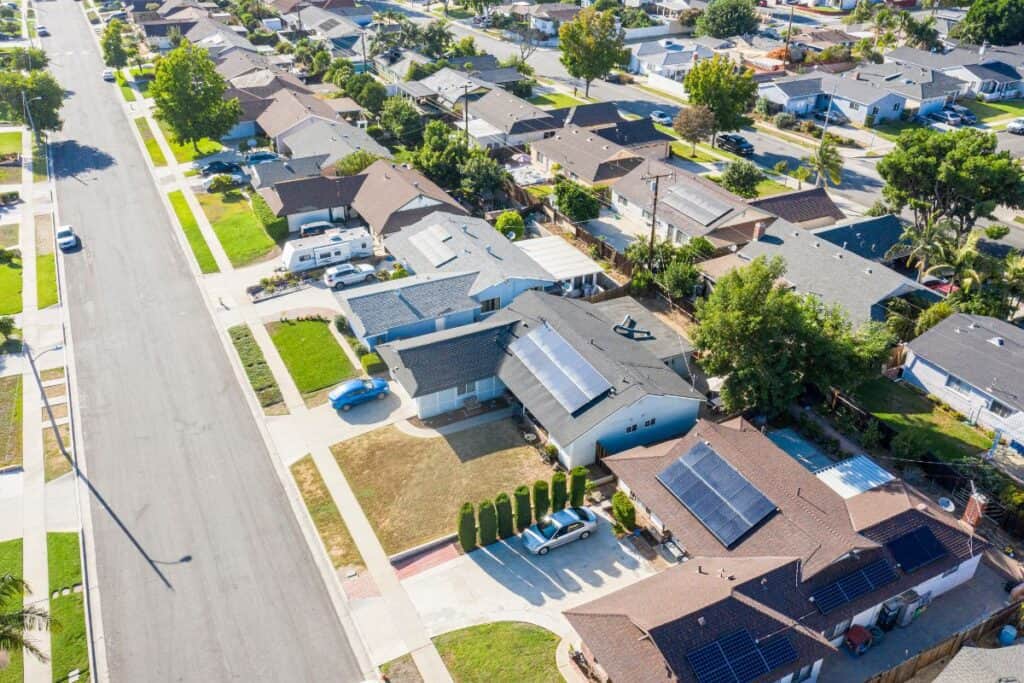
On-Grid vs. Off-Grid Solar Systems: Suitability for Urban and Rural Areas
When deciding between an on-grid and off-grid solar system, your location plays a significant role.
Generally, on-grid systems are more suitable for urban areas, while off-grid systems may be a better fit for rural or remote locations. Let’s delve deeper into why this is the case.
Urban areas often have well-established and reliable grid infrastructure, making on-grid solar systems a viable choice.
An on-grid solar system allows you to feed excess electricity back to the grid through a mechanism called net metering.
This process enables you to earn credits on your utility bill, effectively reducing your overall energy costs.
Moreover, since these systems do not require battery storage, the upfront installation costs are lower. Additionally, in case of cloudy days or during the night, you can easily draw power from the grid, ensuring a consistent electricity supply.
However, these systems rely heavily on the grid. In case of a power outage, an on-grid system typically shuts down as a safety measure to prevent back-feeding that could endanger utility workers fixing the grid.
Therefore, unless paired with a battery storage system or a generator, on-grid solar users in urban areas may still experience power disruptions during outages.
In contrast, off-grid solar systems are ideal for rural or remote areas where grid access is limited, unreliable, or costly to install.
These systems operate independently from the grid, using batteries to store energy for use when solar generation is not possible.
This independence from the grid ensures a constant supply of power, even in the event of outages or grid instability, making it a reliable choice for locations with less dependable grid access.
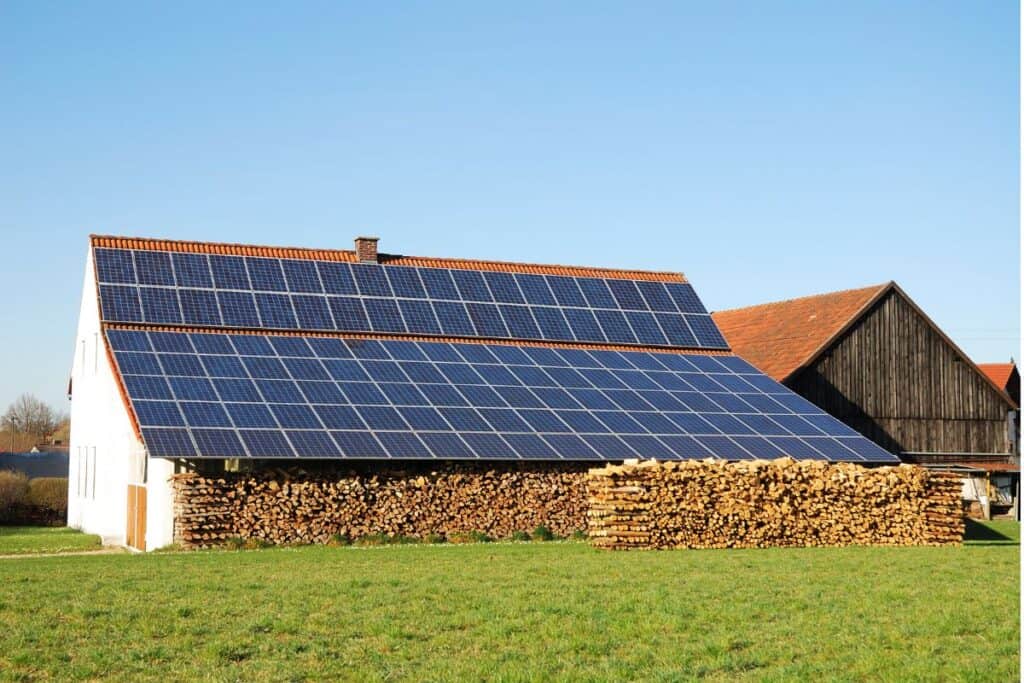
That said, off-grid systems come with their own challenges. They typically require a larger number of solar panels and significant battery storage capacity to ensure power availability during periods of low sun exposure.
This results in higher upfront costs. Moreover, the battery systems require regular maintenance, adding to the overall effort needed to manage the system.
In conclusion, while on-grid systems are typically more suitable for urban areas with reliable grid access, off-grid systems shine in rural or remote areas where grid independence is either a necessity or a strategic choice.
However, individual circumstances can vary, so it’s always advisable to consult with a solar professional to determine the most suitable system for your specific needs.
How does the size of the solar system differ for on-grid and off-grid setups?
Comparing Solar System Sizes: On-Grid vs. Off-Grid Setups
The size of the solar system required can vary significantly between on-grid and off-grid setups.
These differences are driven by several factors including how the system will be used, the availability of grid power, and the need for energy storage. So let’s unpack this a bit and delve into the details.
On-grid solar systems are connected directly to the public electricity grid and therefore do not need to generate all the electricity a home or business needs throughout the day.
During times of low solar production, such as night or during heavy cloud cover, users of on-grid systems can pull electricity from the grid to meet their needs.
Additionally, excess power generated by the system can be fed back into the grid, earning the owner energy credits in the process.
As a result, on-grid systems are typically sized to meet a portion of a building’s total electricity needs, usually enough to offset the highest tier of electricity pricing.
This is where off-grid gets complicated
The sizing of an off-grid solar system, on the other hand, is a bit more complex. As these systems aren’t connected to the grid, they need to generate and store all the electricity a building will use, 24/7.
This includes providing power during times of high demand and during periods when there’s no sunlight. As a result, off-grid solar systems are often larger and come with substantial battery storage.
They need to be big enough to not only generate sufficient power but also store enough of it to keep things running during nighttime hours, cloudy days, and even periods of extended poor weather.
The sizing process for off-grid systems generally involves calculating your daily energy usage, identifying energy use patterns, and considering the worst sunlight conditions you can expect in your location.
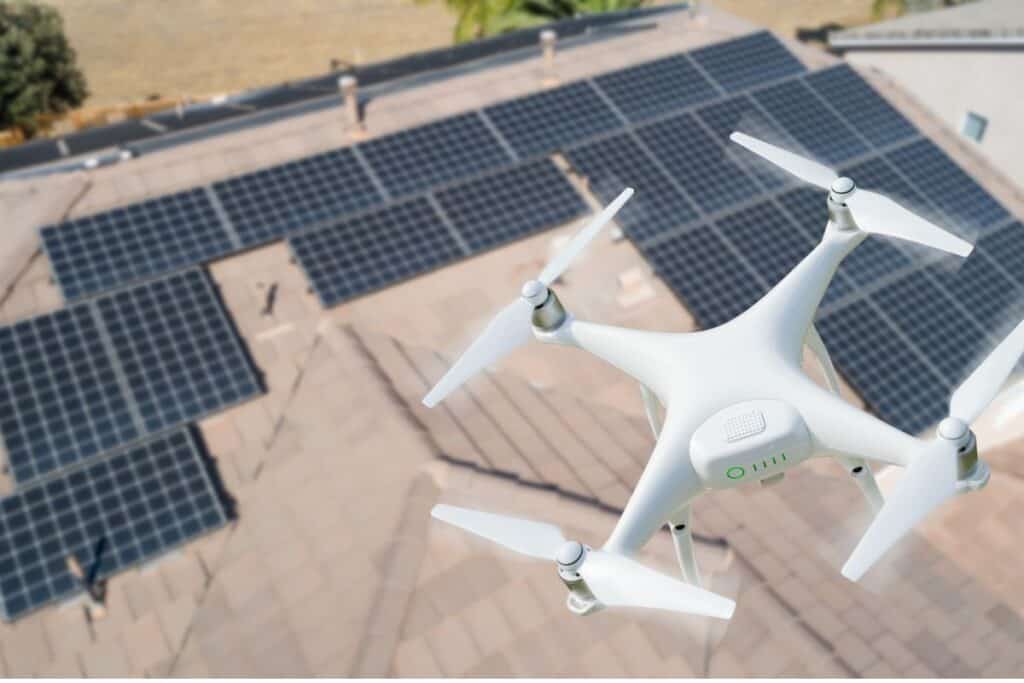
For instance, if your home uses 30 kWh of electricity per day, and you experience an average of 5 peak sun hours per day, you would need a solar system that can produce about 6 kW.
Add in the necessity of storing multiple days’ worth of energy, and the solar system size increases significantly.
In conclusion, while on-grid solar systems are generally smaller and less complex, designed to offset some of your energy use, off-grid systems are considerably larger and come with significant energy storage.
This is due to their need to generate and store all the energy that is required, independent of the grid. Therefore, the decision between an on-grid and off-grid system will have significant implications on the size and complexity of the solar setup you’ll need.
Off-Grid vs. On-Grid: Which One is Right for You?
The choice between an on-grid and off-grid solar system largely depends on your specific circumstances.
If you’re in an area with a reliable grid, and your primary goal is to reduce your electricity bills, an on-grid system might be your best bet.
On the other hand, if you seek energy independence or live in a remote area with unreliable grid access, an off-grid system could be the way to go.
Remember, going solar is a significant investment and each setup has its pros and cons. Consult with a solar professional to understand which system best meets your needs and preferences. After all, the right solar system for you is the one that aligns best with your energy goals, budget, and location.
